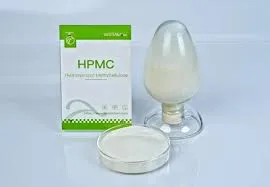
Nov . 16, 2024 18:36 Back to list
Hydroxypropyl Methyl Cellulose Applications and Benefits in Various Industries
Understanding Hydroxypropyl Methyl Cellulose (HPMC)
Hydroxypropyl Methyl Cellulose (HPMC) is a versatile, non-ionic cellulose ether, widely used in various industries due to its unique properties
. This semi-synthetic polymer is derived from natural cellulose and has gained considerable popularity for its function as a thickening, binding, and film-forming agent.One of the key features of HPMC is its excellent solubility in water. When dissolved, it forms a clear, viscous solution that can be tailored for diverse applications depending on the specific grade and concentration used. This property makes HPMC particularly useful in the food industry as a food additive, where it acts as a thickener, stabilizer, and emulsifier. It not only improves the texture and mouthfeel of food products but also enhances their shelf life by preventing ingredient separation.
In the pharmaceutical sector, HPMC is an essential excipient. It is commonly used in tablet formulations, where it assists in binding active ingredients and ensures consistent release profiles. Its gel-forming ability also makes it ideal for controlled-release medications, allowing for a prolonged therapeutic effect. Additionally, HPMC serves as a coating agent for tablets, providing protection against moisture and light while enhancing the product's aesthetic appeal.
In construction, HPMC is employed as an essential additive in cement and plaster formulations. By improving workability and water retention, it enhances the performance of construction materials, ensuring better adhesion and reducing the risk of cracking as materials dry. Its ability to improve the flexibility and smoothness of surface finishes further cements its position as a crucial component in modern construction practices.
hydroxypropyl methyl cellulose hpmc

Another significant application of HPMC is in personal care products. It is commonly found in shampoos, conditioners, lotions, and creams, where it serves as a thickener and stabilizing agent. Its compatibility with a wide range of ingredients makes it an ideal choice for formulating products that require a smooth, luxurious texture.
Moreover, HPMC's environmentally friendly profile is increasingly appealing to both manufacturers and consumers. As a biodegradable material derived from renewable resources, it offers a sustainable alternative to synthetic polymers, aligning with the growing demand for eco-friendly products.
Despite its many advantages, it is essential to note that different grades of HPMC are available, each tailored for specific applications. The choice of grade depends on factors such as viscosity, hydrophobicity, and gel-forming capabilities, which vary based on the degree of substitution of the hydroxypropyl and methyl groups in the cellulose structure.
In summary, Hydroxypropyl Methyl Cellulose stands out as a multifunctional ingredient that enhances a variety of products across multiple industries. Its unique properties and versatility ensure it continues to play a vital role in innovation and product development, making it invaluable in both manufacturing and end-use applications. As demand for sustainable materials rises, HPMC is well-positioned to meet the needs of various sectors while contributing to environmental sustainability.
-
Unlocking the Benefits of HPMC Products: A Gateway to Versatile Applications
NewsAug.07,2025
-
Unleashing the Potential of HPMC Ashland: A Comprehensive Look
NewsAug.07,2025
-
Tile Bonding Cellulose: The Key to Superior Adhesion and Durability
NewsAug.07,2025
-
Hydroxypropyl Methylcellulose Powder: The Versatile Component in Modern Pharmaceuticals
NewsAug.07,2025
-
Hydroxyethyl Cellulose: The Versatile Solution for Various Industries
NewsAug.07,2025
-
Hydroxyethyl Cellulose (HEC): The Versatile Polymer for Various Applications
NewsAug.07,2025







